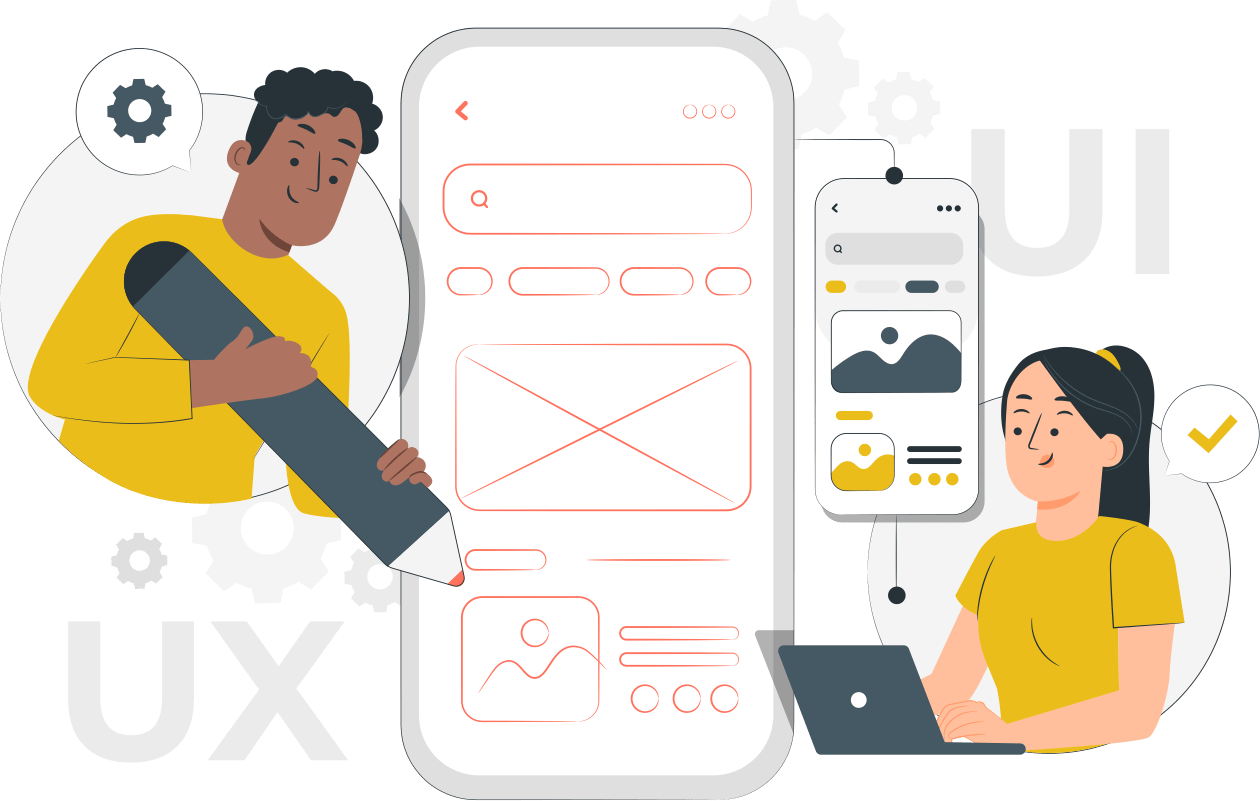User-friendly design (UFD) is the philosophy of crafting interfaces and experiences that are intuitive, easy to use, and enjoyable for people of all technical abilities. A user-friendly website or app feels natural and effortless to navigate, leaving a positive impression on users and keeping them engaged.
Here are some key principles of user-friendly design:
Simplicity & Clarity:
- Clean and Uncluttered Interface: Avoid overwhelming users with excessive elements. Prioritize clarity by using white space effectively and focusing on the most important information.
- Intuitive Navigation: Design a navigation system that is clear, consistent, and predictable. Users should be able to find what they’re looking for easily, without getting lost.
- Self-explanatory Elements: Labels, buttons, and icons should be self-explanatory and easy to understand at a glance. Avoid technical jargon and use clear, concise language.
User Experience (UX) Focus:
- Consider User Needs: Design your website or app with your target audience in mind. Understand their needs, goals, and pain points, and tailor the design to address them effectively.
- Accessibility: Ensure your design is accessible to users with disabilities. This includes features like alt text for images, keyboard navigation, and screen reader compatibility.
- Mobile-Responsiveness: In today’s mobile world, a responsive design that adapts seamlessly to different screen sizes (desktops, tablets, smartphones) is crucial.
Visual Appeal & Consistency:
- Visually Appealing Design: An aesthetically pleasing design can enhance user experience. However, prioritize usability over flashy elements.
- Consistency: Maintain consistency in design elements like layout, typography, and color scheme throughout your website or app. This creates a sense of familiarity and makes navigation easier.
- Use of High-Quality Visuals: High-quality images, videos, and graphics can add value to your content and enhance user engagement.
Additional User-Friendly Design Practices:
- Minimize Error Messages: Strive to prevent errors by providing clear instructions and user guidance. If errors occur, use informative error messages that guide users towards a solution.
- Fast Loading Speed: Ensure your website or app loads quickly to avoid frustrating users with long wait times.
- User Feedback Mechanisms: Integrate user feedback mechanisms like surveys or contact forms to gather user input and identify areas for improvement.
Benefits of User-Friendly Design:
- Increased User Satisfaction: When users find your website or app easy and enjoyable to use, they are more likely to be satisfied and have a positive overall experience.
- Improved Engagement: A user-friendly design keeps users engaged and coming back for more.
- Enhanced Conversions: By making it easy for users to complete desired actions (like making a purchase or signing up for a service), user-friendly design can improve conversion rates.
- Reduced Support Costs: A well-designed interface can reduce the need for user support by eliminating confusion and making features self-explanatory.
- Brand Reputation Boost: A positive user experience contributes to a positive brand reputation.
By prioritizing user-friendly design principles, you can create a website or app that is not only functional but also enjoyable to use, ultimately achieving your business goals and fostering stronger relationships with your users.



